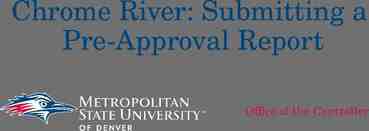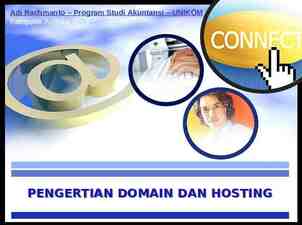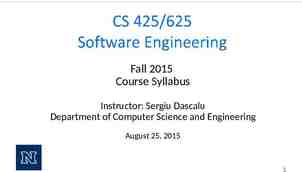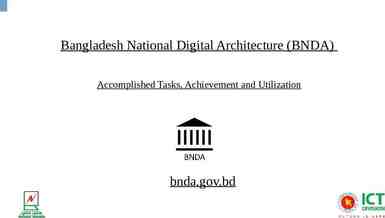Compliance Test and Reports Texas AgriLife Extension Service
39 Slides5.77 MB

Compliance Test and Reports Texas AgriLife Extension Service

Overview Required Reporting and Options Sample Reporting Documents Sample Collection Testing and Report Frequency Consequences of Not Completing Tests and Reports Consequences of Noncompliance Record Keeping

Treatment and Disposal Requirements Not all sites are suitable for standard drainfield systems.

Treatment and Disposal Requirements cont. Some treatment train combinations require secondary quality effluent. Biochemical Oxygen Demand (BOD) and Total Suspended Solids (TSS): 30-day Average . 20 mg/L Seven-day Average . 30 mg/L Daily Maximum . 45 mg/L Single Grab . 65 mg/L pH 6.0 - 9.0 standard units

WASTEWATER QUALITY TESTS BOD Biochemical oxygen demand TSS Total suspended solids Bacteria Indicators of disinfection Chlorine residual Fecal Coliform

Biochemical Oxygen Demand Biochemical oxygen demand, or BOD is the amount of oxygen used during the breakdown of organic material BOD is considered an indirect measure of the organic content of a sample CBOD – Carbonaceous Biochemical Oxygen Demand Laboratory test: oxygen demand, mg/L

Total Suspended Solids Amount of the total solids that may be caught with a 1.5 µm filter Measure of system performance. Laboratory test: mass of solids, mg/L

Fecal Coliform Indicator microorganism Cultured in standard tests to indicate contamination (laboratory) Membrane filter technique Direct count of colonies trapped and cultured Multiple tube fermentation method Provides an estimate of the MPN per 100 mL Measured as colonies/100 mL

Required Reporting and Testing Onsite wastewater treatment systems using soil for removal of most of the wastewater constituents do not require testing and reporting Treatment trains with a secondary treatment Example: septic tank and drain field. Greater risk of public or environmental health Because of limited treatment potential by the native soil Because of risk of human contact with the wastewater. Therefore, secondary treatment systems have a reporting requirement. Surface distribution systems and non-standard treatment systems have a testing requirement.

Required Reporting and Testing All onsite wastewater treatment systems that utilize a secondary treatment component are required to report the system status. A summary of the various treatment train options that include secondary treatment are described in a Table. The Table also identifies the treatment train options requiring both testing and reporting requirements.

OSSF Testing and Reporting System Description Maintenance Contract/ Affidavit Required Maintenance Activities Required Testing and Reporting Requirements (2) No Per design No Septic Tank & ET Drainfield (Unlined) No (3) Per design No Septic Tank & ET Drainfield (Lined) No (3) Per design No Septic Tank & Pumped Drainfield No Per design No Septic Tank & Leaching Chamber No Per design No Septic Tank & Gravelless Pipe No Per design No Septic Tank & Low Pressure Dosing No Per design No Septic Tank & Absorptive Mounds No Per design No Septic Tank & Absorptive Drainfield

OSSF Testing and Reporting System Description Maintenance Contract/ Affidavit Required Maintenance Activities Required Testing and Reporting Requirements (2) Septic Tank & Soil Substitution No Per design No Septic Tank, Secondary Treatment, Filter & Surface Application Yes Entire OSSF Test & Report Secondary Treatment & Standard Absorptive Drainfields Yes Treatment System Report Secondary Treatment & ET Drainfield Yes Treatment System Report Secondary Treatment & Leaching Chamber Yes Treatment System Report Secondary Treatment & Gravelless Pipe Yes Treatment System Report Secondary Treatment & Filters & Drip Emitter Yes Entire OSSF Report Secondary Treatment & Low Pressure Dosing Yes Treatment System Report

OSSF Testing and Reporting System Description Maintenance Contract/ Affidavit Required Maintenance Activities Required Testing and Reporting Requirements (2) Secondary Treatment & Absorptive Mounds Yes Treatment System Report Secondary Treatment & Surface Application Yes Entire OSSF Test & Report Any Other Treatment System Per permitting authority Per permitting authority Per permitting authority Any Other Subsurface Disposal System Per permitting authority Per permitting authority Per permitting authority Any Other Surface Disposal System Yes Per permitting authority Per permitting authority Non-Standard Treatment & Surface Application Yes Entire OSSF Test & Report: Per permitting authority Holding Tank Yes Pump Tank as needed Keep Pump records

Required Reporting and Testing continued The component of the onsite wastewater treatment system requiring the testing and reporting is also presented in the Table 4.1. For example, treatment train with secondary treatment and a soil absorptive drainfield Reporting treatment system operation (Table 4.1). A treatment train with secondary treatment and surface application Reporting the entire system operation and testing on the disinfection component.

Report Requirements The maintenance provider performing service on onsite wastewater treatment systems must report: This report must be submitted to the permitting authority and if applicable to the owner within 14 days after the date the test is performed. The report includes items: any responses to owner complaints, the results of the maintenance company findings and the test results. Findings regarding items inspected Repairs conducted and items replaced Responses to complaints Test results where applicable. Three signed & dated copies of the report: permitting authority, owner, provider

Sample Testing and Reporting Record (30 TAC 285) 1. Required frequency of maintenance check and tests (daily, weekly, monthly, quarterly, every 4 months). Actual date of test: 2. System inspection: Property Address: Permit Number: Person Performing Inspection: (Signature) Inspected Item: Operational Inoperative Aerators, Filters, Irrigation Pumps, Recirculation Pumps, Sludge Condition, Disinfection Device, Chlorine Supply, Electrical Circuits, Distribution System, Sprayfield Vegetation/Seeding (if applicable), Other as Noted

Table 4 Sample Testing and Reporting Record (30 TAC 285) 3. Repairs to system (list all components replaced): 4.Tests required and results: Test Required: Yes No, Results (units): mg/L, mpn/100 mL, or trace, Test Method: BOD (Grab) TSS (Grab) Cl2 (Grab) Fecal Coliform (Grab)

Table 4 Sample Testing and Reporting Record (30 TAC 285) 5. Date(s) responded to owner complaints during reporting period (attach copy of complaint and findings): 6. General comments or recommendations:

Sample Collection Timing of sampling Sampling location Sample collection Sample containers Sample volume Sample transport Laboratory Interference

Sampling Location Depends on test Process performance Best – external sampling port Outlet baffles Discharge from system Disinfection from pump tank

Sample Collection Selecting right tool for the job. Sludge judge Dip Stick Sample bottle Dipper Vacuum pump

Sample Transport Ice Chest Time of day Day of week How late will lab accept samples Test specific 5-day BOD Check with lab for constraints on analysis Garbage-in equals garbage-out

Testing and Reporting 285.7(e)(4) State Perspective: The owner of an OSSF for a single family residence who elects to maintain their unit through the homeowner exemption is not subject to testing and reporting requirements. County Authority: Can be more stringent than State and require reporting

Testing and Reporting 285.7(g) Inspections by authorized agents or commission. An authorized agent or the commission may inspect an on-site sewage system using aerobic treatment at any time.

Testing and Reporting 285.7(f) Replacement parts. The manufacturer of the installed on-site aerobic system shall make available to the homeowner all replacement parts for that aerobic system to any homeowner who elects to maintain the on-site aerobic system. The manufacturer shall also make replacement parts available to installers and maintenance providers. Failure to do so may result in removal of the manufacturer’s product(s) from the list of approved systems.

Testing and Report Frequency Surface application and subsurface disposal, require a test and report a minimum of once every four months. For non-single family residences only, one BOD5 and TSS grab sample per year is required. Minimum acceptable test results for the BOD5 and TSS grab samples are not to exceed 65 mg/L.

Testing and Report Frequency Compliance of the disinfection component will be verified at each service visit. The total chlorine residual or fecal coliform testing must be performed to verify disinfection operation. Minimum acceptable test results Total chlorine residual is 0.1 mg/L residual in the pump tank Fecal coliform is not to exceed 200 MPN/100 mL (CFU/100mL).

Required testing and reporting (30TAC 285.91(4)) Type and Size of Treatment Unit Testing Frequency Required Tests Minimum Acceptable Test Results Any Treatment Method in Conjunction with Surface Application At least once every four months One BOD5 and TSS Grab Sample Per Year (non-single family residences only) Total Chlorine Residual or Fecal Coliform at Each Required Test BOD5 and TSS Grab Samples Not to Exceed 65 mg/L 0.1 mg/L Residual in Pump Tank or Fecal Coliform Not to Exceed 200 MPN/100 mL (CFU/100 mL) Any Secondary Treatment System At least once every four months None None Permit Specific Permit Specific Permit Specific Non Standard

Testing and Report Frequency Electronic Monitoring and Automatic Notification (EMAN) The required number of tests per year will be reduced From three (every four months) to two (every six months) per year

Testing and Report Frequency Electronic Monitoring and Automatic Notification Electronic monitoring and automatic telephone or radio access. Notify the maintenance company of system or components failure and will monitor the amount of disinfection in the system. Maintenance company shall be responsible for ensuring that the electronic monitoring and automatic telephone or radio access systems are working properly.

Consequences of Not Completing Tests and Reports – Requiring Maintenance Contract An authorized agent or the commission conditions approval of a permit for an on-site sewage disposal system using aerobic treatment on the system's owner contracting for the maintenance of the system, the order, resolution, or rule may require the maintenance company to: (1) inspect the system at specified intervals; (2) submit a report on each inspection to the authorized agent or commission; and (3) provide a copy of each report submitted to the system's owner.

Owners Duties with Respect to Noncompliance If an OSSF is malfunctioning, the owner shall bring the OSSF into compliance by repairing the malfunction. The owner shall initiate repair of a malfunctioning OSSF no later than: the 30th day after the date of notification if owner not notified during previous 12 months; the 20th day after the date of notification if owner notified once during previous 12 months; the 10th day after the date of notification if owner notified at least twice during previous 12 months;

Duties of Owners With Malfunctioning OSSFs 285.70(b) If aerobic treatment system maintenance is provided by the homeowner, as described in 285.7(d)(4) of this title (relating to Maintenance Requirements), an authorized agent or the commission may require the homeowner to contract for maintenance of the on-site sewage disposal system using aerobic treatment for a single-family residence if the system is located in a county of at least 40,000 persons and:

Duties of Owners With Malfunctioning OSSFs 285.70(b) (1) the authorized agent or commission determines that the owner has violated this chapter or a rule adopted or order or permit issued under this chapter and the owner fails to correct the violation no later than the 10th day after the date of receipt of notification by the permitting authority, or (2) the owner commits another violation before the third anniversary of the initial violation of this chapter or rule adopted und the Texas Health and Safety Code, Chapter 366.

Consequences of Noncompliance Definitions Malfunctioning OSSF: An OSSF that is causing a nuisance or is not operating in compliance with this chapter. Nuisance: sewage, human excreta, or other organic waste discharged or exposed in a manner that makes it a potential instrument or medium in the transmission of disease to or between persons; an overflow from a septic tank or similar device, including surface discharge from groundwater contamination by a component of an OSSF; or a blatant discharge from an OSSF

Malfunctions Failing an effluent standard is an indication of a malfunctioning system Inspection reports showing uncorrected physical conditions, complaints, or nonfunctioning equipment indicates a malfunction A system creating a nuisance is considered a malfunction

Consequences of Noncompliance – Additional Requirements More stringent requirements may be set by local authorized agents.

Record Keeping A maintenance provider must maintain records regarding the performance of maintenance on an onsite wastewater treatment system. Minimum documentation: any responses to owner complaints, results of the maintenance company findings, repairs to system, and test results. Failure to maintain these documents is viewed as a failure to perform the required maintenance. Therefore, the lack of maintaining the records can result in the suspension of the maintenance provider license

Summary Required Reporting and Options Testing and Report Frequency Consequences of Not Completing Tests and Reports Consequences of Noncompliance Record Keeping






